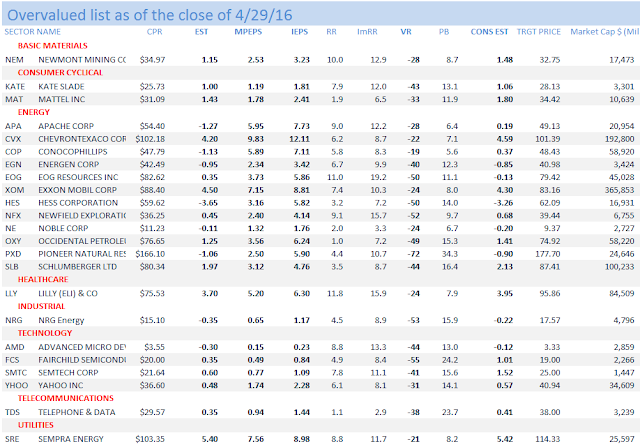Thirty equities
with significant buyback programs in the last 7 years show that their average EPS
grew at 9.9% pa while Net Profit gained only 4.9% (Median numbers are 8.1 vs
1.7%.) Using the averages, the give up is 5.0% pa which is an enormous
difference in the amount of cash generated.
Our analysis
is based on the Net Profit Test which asks the question: what rate of return is required on investing the
buyback funds to grow the Net Profit and EPS at the same rate as the Earnings per Share (EPS) grew due to the buyback. The
answer is not very much. The average for
the 30 stocks is 5.8% and the median 5.4%.
This give up
in Net Profit is directly attributable to the size of the buyback program as
shown in this chart. On the x-axis we
have the size of the reduction in shares outstanding from 2008 to 2015. On the y-axis, we show the give up in the
growth of EPS and Net Profit. The
correlation between the two is 0.94. In
plain English, the larger the buyback program, the greater the penalty as
measured by cash generation.
There are two main reasons for this apparent anomaly. One, the price paid for the shares is too much to compete with alternative investments (the average P/E for all stocks is 15x for the period). An example of this is given in the paper “The Net Profit Test: Comparing Buybacks to Investment”. Secondly, the correlation between each equities annual percentage of total buyback and average annual price is very a positive: it averages 0 .48 and the median is 0.59. The exceptions are ANTM (-0.60), CSCO (-0.03), GPS (-0.33), TMK (-0.12) AND TRV (-0.16).
Ranked from the bottom in terms of Required Return to equal EPS growth we have BOBE (-0.7%), MCD (2.3%), LM (2.9%), KO (3.7%), DRI (3.8%), KMB (2.9%), VAR (4.3%), FOSL (4.3%), CAKE (4.5%), OMC (4.8%), AAPL (5.0%), ALL (5.1%), TXN (5.1%), PH (5.2%), SHW (5.3%) and DE at 5.4%.
Correl
is the Correlation between average stock
price and the %age of annual buyback to total buyback from 2009 to 2015. There is a definite positive correlation
between the size of the annual buyback and the price.
|
Shares
O/S
is the %age contraction from 2008 to 2015
|
Cost
(B$)
is the cost in Billions of total shares bought back from 2009 to 2015
|
%
Growth
in EPS and NET PRF is the % annual growth in Earnings per Share and Net
Profit from 2008 to 2015
|
Give
up
is the difference between the growth in EPS and growth in Net Profit.
Required
Return ADJ and NOM. The nominal required return is the % growth
applied to the buyback cost to equalize the growth in net profit to earnings
per share growth. ADJ is the adjusted
required return to reflect that our method of calculation of buyback cost is less than actual cost (using last 4 years
of data)
|
Average
Prc/Bk (Price/Book Value) and Ave P/E (Average Price to Earnings
ratio) are based on 2009-2015
|
|
May 4. 2016 corequity.blogspot.com









